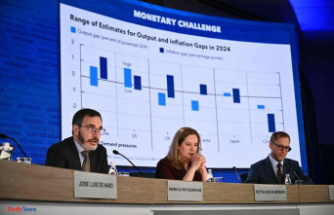with The swipe of a klimatvåg all over the world. Individuals, companies, local authorities and politicians is a manifestation of the commitment, and increased their ambitions. There is much to be commended. However, often, the encounter of the wave with a wall of resistance in the region is that climate action is expensive, and gives a reduced standard. Few question the long term value of a more stringent climate policy, but there is a widespread view that climate involves almost exclusively the cost of the short-term. In a new scientific summary, we demonstrate that this approach is without merit, and lead to decisions that are bad from a social point of view.
Measures to reduce greenhouse gas emissions often leads to cost, but it is not always the case. It is like extinguishing a lamp which is lit up unnecessarily, making a financial saving, and the cost to put a lid on the pot is very small. Compact fluorescent bulbs cost initially, but it is clearly not viable. This is also true for the majority of the measures for improving energy efficiency in the industry.
but that may be a new design that could be cheaper or more expensive. Nevertheless, the mean of many climate action, an increase in costs. They are in the rule that the costs of climate change are even greater, which makes these measures economically viable. These calculations and considerations are important, but they are often that the climate benefits are svårberäknad and is set to fall in the future, while the costs are obvious and closely related in time and space.
the big problem is that the most of the synergies that often exist between climate change objectives and other objectives are overlooked. The calculations include often the benefits that climate policies involves in the here and now, in addition to the benefits of a reduced carbon footprint.
There is often a one-eyed bloody focus is on the costs. In this regard, within the EU and at the national and local levels in Sweden.
The project, ”Policy of the commercial and global climate change. , which was financed by Formas, we have been systematically going through the collected research of the so-called " sidonyttor with the climate. We have recently published our findings in an article in the scientific journal Climate policy. Our kunskapssyntes is, to our knowledge, the largest that has been made in this area. Briefly, it indicates that the sidonyttor as the climate often leads to is important. But, unfortunately, the assembly, this knowledge is rarely applied in political decision-making.
at the Core of the project is a major literature review. We saw and went through 1 of 749 scientific papers and djupstuderade 239 based on 15 different parameters. The focus was on climate change and their sidonyttor, in addition to the impact from climate change (often referred to as the ”co-benefits”).
. When these are to be evaluated economically, it turns out, in many cases, to sidonyttorna is significantly higher than that of åtgärdskostnaderna.
It is, by far, the most common type of sidonytta described in this research is the improvement of air quality. This knowledge is both important and natural, because the air pollution causes a great deal of damage. In the EUROPEAN union is estimated at 800 000 people die due to air pollution every year. In Sweden, it's on almost 8 000 people, and a great incapacity rate, which results in costs of tens of billions of dollars each year. Traffic is one of the most important reasons for these costs.
To say that it is more expensive to reduce their emissions of greenhouse gases from traffic, without having to take into account, this does not make sense, but unfortunately common. The socio-economic assessments will then be misleading, and decisions are sub-optimal.
In our article, we will show that there are many other categories of sidonyttor. Even though they are not as well studied as the air quality and the health benefits – in addition to the value of the reduction in greenhouse gas emissions – the significant are:
•
for A more plant-based diet: , in line with the official recommendations, is able to reduce the global mortality rate of 6% to 10%. < / p>
A more pro-active travel, with cycling and walking. will give better health, and some of the traffic measures, can provide the sidonyttor, which is 10 to 25 times greater than the cost of the investment.
Climate action in agriculture can give rise to more fertile soils and better water quality, which may lead to a better harvest and a richer biodiversity.
energy Efficiency and shift from fossil fuel to renewable energy sources to reduce their dependence on energy imports, enhancing energy security and reducing energy costs.
Green tax shift , can contribute to a higher welfare, such as, for example, through a reduction in taxes on labour.
the studies we have reviewed, it is not seldom the case, the millions of lives that could be saved and tens of billions of kroner to be saved. The results are sometimes stunning. As an example, a study that only luftkvalitetsnyttan justify policykostnaden, India needs to aim for 1.5 ° c climate target, instead of 2 degrees. The same is true of China and the EUROPEAN union, subject to certain assumptions. And this is only one of a category of sidonytta, the improvement of air quality. A summary of the parallel, where sidonyttor of the policy measures that would often show even greater gains for the society. Unfortunately, there are no such studies almost entirely.
and in the practical decision-making. There is often a one-eyed bloody focus is on the costs. In this regard, within the EU and at the national and local levels in Sweden. At the same time, it is important to continue to identify and calculate the sidonyttor, and especially combinations of such), it is therefore important to examine how the decision-making process can be improved, and that the implementation of these reforms.
An important step in Sweden is to be a change to the guidelines for decision-making in the municipalities and the central government, not least in Sweden. For a start, it's kommittéförordningen, which controls the state utredningars of the work, to be written about. The relevant sidonyttor of the climate, in the form of, for example, related to health, always need to be stated, and, ideally, be valued monetarily. Then, have the knowledge to be added on the weighing scale next to the cost when those decisions are well made. Otherwise, the outcome is sub-optimal and costly for the society. The samhällsnyttor that would be cleared would be likely to increase support for a more ambitious policy on climate change.
and for the policy to take account of the existing knowledge, the better. Then, it will often be more accurate to substitute the usual concept of ”burden-sharing in climate policy, using the ”skördefördelning”, that is to say, a situation in which the usefulness of a measure, the total is greater than the cost of the service.
the Increase in the application of such a science-based, approach will probably lead to a financially better decision-making, and increased support for climate change policy, thus increasing the chances of achieving the climate change targets.
Link to a graphic












